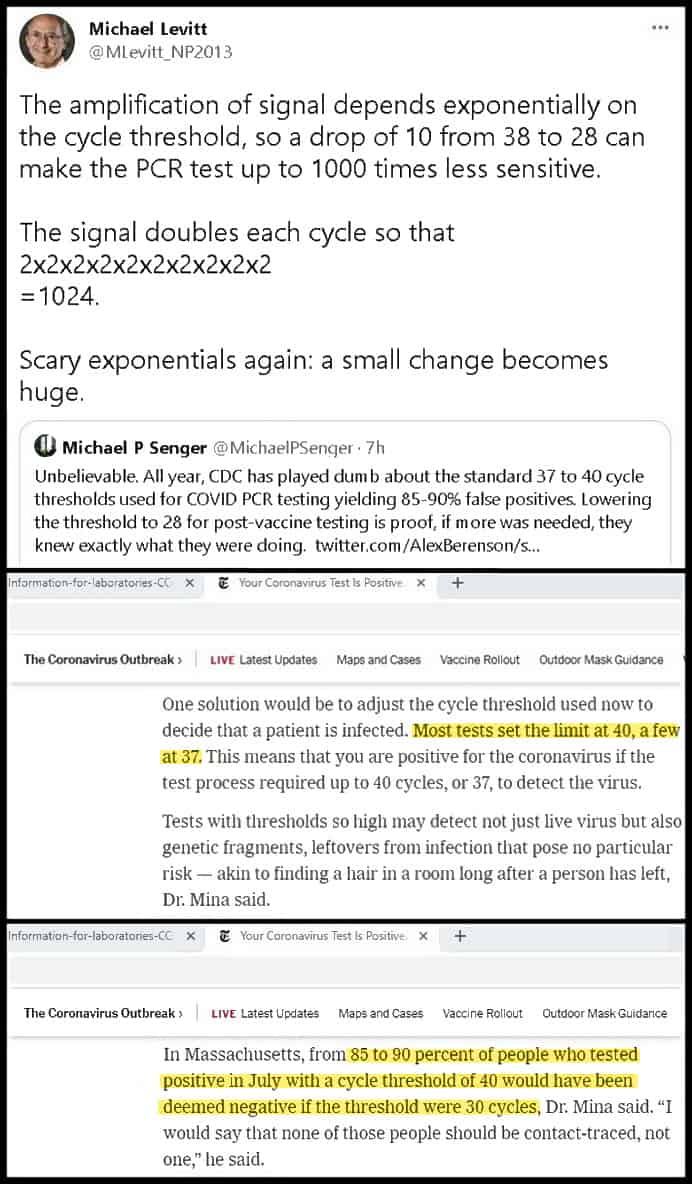UPDATE BELOW IS DATED MAY 4th (2021)
The CDC is lowering post-vaccine case detection PCR test cycle thresholds to 28. It was 36-40 before, which “found” 10x [CORRECTION BELOW] as many false positive cases.
The CDC is not a medical organization. It is a political one. This is them shouting that fact.
— J.P.
- CORRECTION I was wrong. The sudden lowering of the PCR cycle threshold by the CDC lowers the sensitivity not by 10x but by 1000x. It’s exponential. — J.P.
(RPT) What does this mean? Well, this means there will be a dramatic drop in cases under Biden.
UPDATE
The Facts:
- The CDC is and will be collecting samples from COVID tests of vaccinated individuals to try and determine if the virus can breakthrough the protection of the vaccine. In doing so the CDC has specified a cycle threshold for PCR tests.
Reflect On:
- Why a cycle threshold suddenly? Why not one prior to the rollout of vaccines? How many false positives have we seen as a result of no prior cycle threshold? Will PCR tests of the unvaccinated have this new cycle threshold?
The CDC is requiring that clinical specimens for sequencing should have an RT-PCR Ct value ≤28 when conducting tests for vaccinated individuals. “Ct” refers to cycle threshold.
According to Public Health Ontario,
The cycle threshold (Ct) value is the actual number of cycles it takes for the PCR test to detect the virus. It indicates an estimate of how much virus was likely in the sample to start with – not the actual amount. If the virus is found in a low number of cycles (Ct value under 30), it means that the virus was easier to find in sample and that the sample started out with a large amount of the virus. Think about it like the zoom button on your computer, if you only have to zoom in a little (zoom at 110%), it means that item was big to start with. If you have to zoom a lot (zoom at 180%), it means that the item was small to start with.
Why This Is Important: It’s been difficult to find what PCR Ct value tests have been using during this pandemic, and it’s important because at a value at 35 or more for example, an individual is more likely to test “positive” when they are not infected and/or do not even have the ability to transmit. This is commonly known as a “false positive.”…
